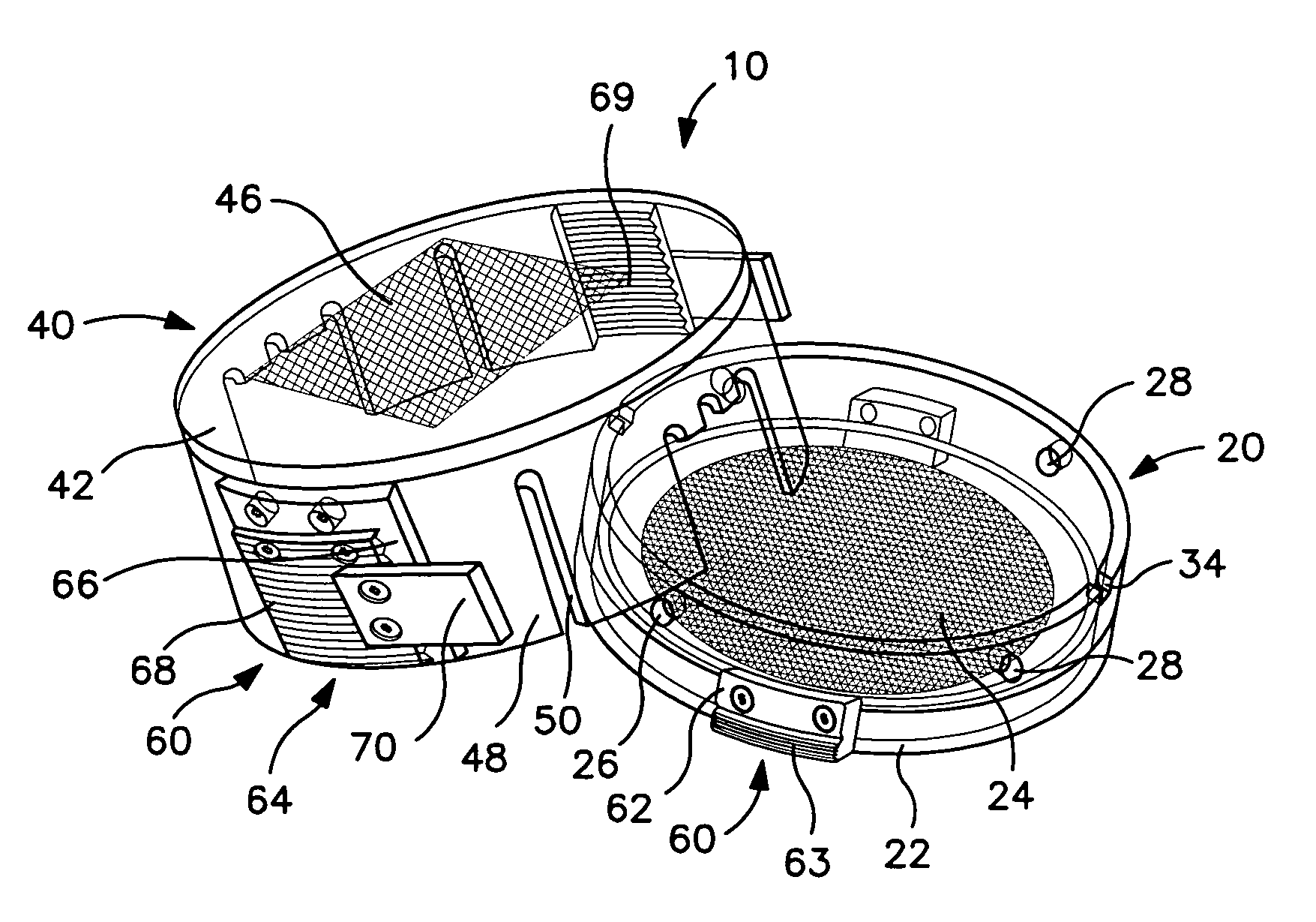Device for containing and analyzing surgically excised tissue and related methods
- Summary
- Abstract
- Description
- Claims
- Application Information
AI Technical Summary
Benefits of technology
Problems solved by technology
Method used
Image
Examples
Embodiment Construction
[0032]As shown in FIGS. 1–3, a collection device 10 for containing and immobilizing a surgically excised tissue specimen TS is disclosed. The collection device 10 functions to permit core sampling of tissue specimen TS for molecular or similar analysis without requiring shifting or relocation of immobilized tissue specimen TS. Collection device 10 containing the remainder of tissue specimen TS can then be used as a transport and storage device for specimen TS as it undergoes radiographic and / or pathological analysis. The excised tissue specimen TS may be a surgically or otherwise excised specimen suspected of being abnormal and therefore requiring further diagnostic or therapeutic evaluation or examination, such as, but not limited to, tissue containing a tumor, lesion, cyst or mass of cell. Collection device 10 of the present invention is particularly well suited for containing such specimens undergoing multiple forms of analysis, in particular, specimens where it is desirable to p...
PUM
 Login to View More
Login to View More Abstract
Description
Claims
Application Information
 Login to View More
Login to View More - R&D
- Intellectual Property
- Life Sciences
- Materials
- Tech Scout
- Unparalleled Data Quality
- Higher Quality Content
- 60% Fewer Hallucinations
Browse by: Latest US Patents, China's latest patents, Technical Efficacy Thesaurus, Application Domain, Technology Topic, Popular Technical Reports.
© 2025 PatSnap. All rights reserved.Legal|Privacy policy|Modern Slavery Act Transparency Statement|Sitemap|About US| Contact US: help@patsnap.com



